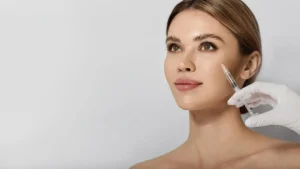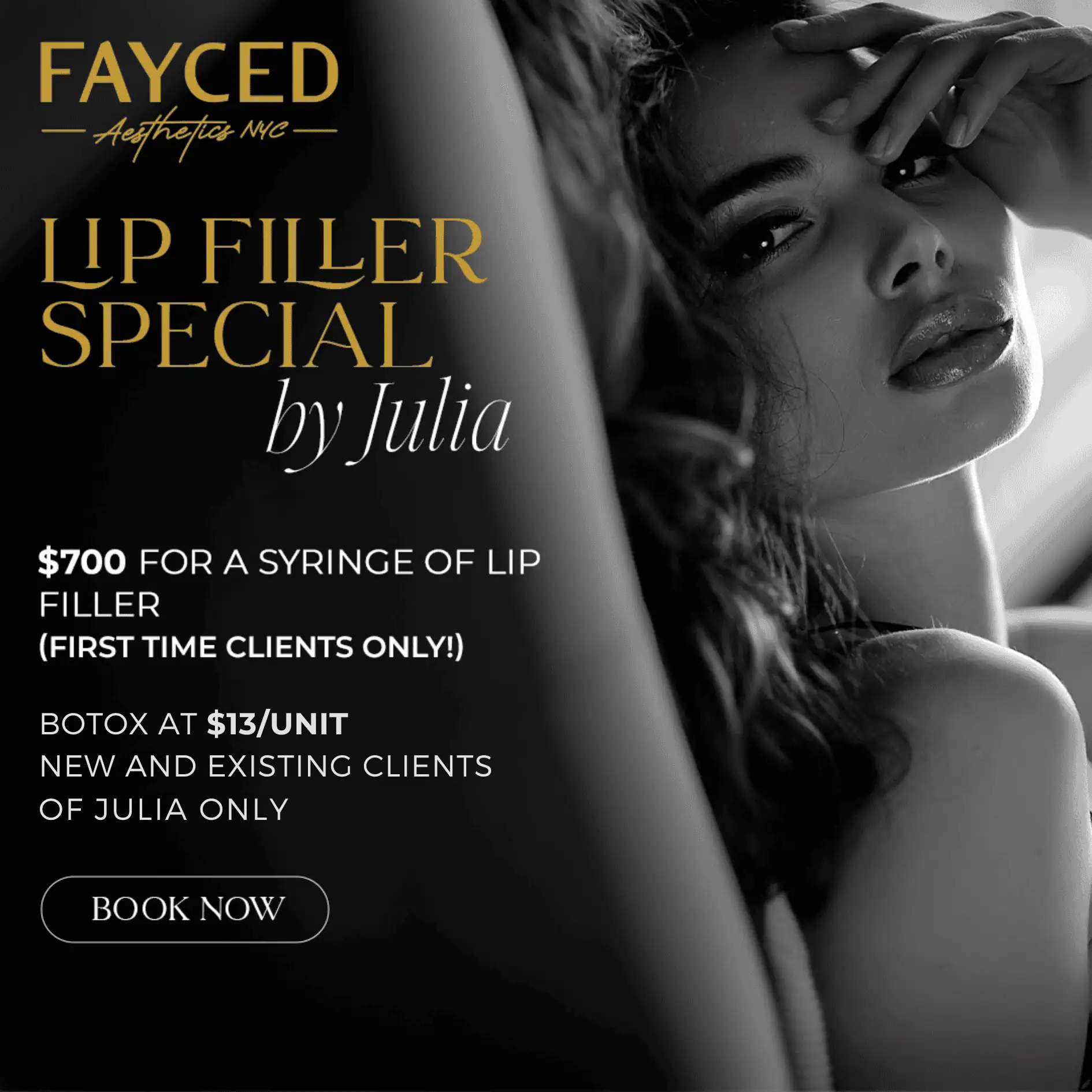Table of Contents
Sculptra has emerged as a revolutionary option for those seeking a youthful, rejuvenated appearance. As a cutting-edge dermal filler, Sculptra stands out due to its unique composition and long-lasting results. However, like any medical procedure, understanding the potential causes and risk factors associated with Sculptra treatment is crucial for making an informed decision. This blog will delve into the intricacies of Sculptra, exploring what it is, how it works, and the various factors that may influence your treatment experience.
What is Sculptra?
Sculptra, or poly-L-lactic acid (PLLA), is an FDA-approved injectable treatment for restoring facial volume lost due to aging or illness. Unlike traditional fillers that provide immediate results, Sculptra gradually stimulates the body’s collagen production. This process produces more natural, subtle facial contours and improved skin texture.
The Science Behind Sculptra
Sculptra’s active ingredient, poly-L-lactic acid, is a biocompatible and biodegradable synthetic substance. When injected into the skin, PLLA microspheres stimulate fibroblasts, the cells responsible for producing collagen. Over several months, the body absorbs these microspheres, leaving behind a network of new collagen fibers that enhance the skin’s structural integrity and elasticity. This gradual process delivers natural-looking, long-lasting volume and improved skin texture.
The Appeal of Sculptra: Long-Lasting, Natural Results
One of the most attractive features of Sculptra is its ability to deliver results that look and feel natural. The gradual improvement in skin appearance allows for a more discreet transformation, avoiding the sudden changes often associated with other dermal fillers. Additionally, the results of Sculptra can last up to two years or more, making it a cost-effective and time-efficient option for many patients.
Causes and Risk Factors During Sculptra Treatment
While Sculptra is generally considered safe and effective, knowing the potential causes and risk factors that could impact your treatment outcome is essential. These can be broadly categorized into patient-specific, treatment-related, and practitioner-related factors.
Patient-Specific Factors
- Individual Health Conditions:
- Autoimmune Diseases: Patients with autoimmune conditions may have an increased risk of adverse reactions to Sculptra. It is crucial to discuss your medical history with your practitioner before undergoing treatment.
- Allergies: Although rare, some individuals may be allergic to poly-L-lactic acid or other injection components. A thorough allergy screening should be conducted before treatment.
- Skin Quality and Type:
- Thin or Sensitive Skin: People with thin or sensitive skin may experience more severe adverse effects, such as bruising, edema, or redness at the injection sites.
- Pre-existing Skin Conditions: Conditions like rosacea, eczema, or severe acne can complicate the healing process and increase the likelihood of adverse reactions.
- Age and Lifestyle Factors:
- Age: Older patients may have slower collagen production, affecting the speed and extent of results.
- Lifestyle Choices: Smoking, binge drinking, and eating a bad diet can all have a detrimental effect on the body’s capacity to mend itself following medical intervention and make collagen.
Treatment-Related Factors
- Injection Technique:
- Depth of Injection: Proper depth is critical for optimal results. Injections that are too shallow may not stimulate sufficient collagen production, while overly deep injections can increase the risk of nodules or granulomas.
- The volume of Product Used: Using too much or too little Sculptra can affect the outcome. An experienced practitioner will know how to balance the amount of product to achieve the desired results.
- Treatment Plan:
- Number of Sessions: Sculptra typically requires a series of treatments spaced several weeks apart. Skipping sessions or deviating from the recommended schedule can compromise the effectiveness of the treatment.
- Follow-Up Care: Adhering to post-treatment care instructions, such as massaging the treated areas and avoiding certain activities, is crucial for minimizing side effects and enhancing results.
Practitioner-Related Factors
- Experience and Training:
- Skill Level: The expertise of the practitioner administering Sculptra plays a significant role in the success of the treatment. Choosing a board-certified dermatologist or plastic surgeon with extensive experience in Sculptra injections is vital.
- Knowledge of Facial Anatomy: A deep understanding of facial anatomy ensures that the injections are placed precisely to achieve natural-looking results and avoid complications.
- Patient Assessment and Consultation:
- Thorough Evaluation: A comprehensive assessment of the patient’s medical history, skin condition, and aesthetic goals is essential for customizing the treatment plan and minimizing risks.
- Clear Communication: Open and honest communication between the patient and practitioner helps set realistic expectations and promptly addresses concerns.
Potential Side Effects and Complications
Despite its high safety profile, Sculptra treatment can be associated with specific side effects and complications. Understanding these potential issues can help patients make informed decisions and take appropriate precautions.
Common Side Effects
- Injection Site Reactions:
- Bruising and Swelling: Mild bruising and swelling are common after Sculptra injections and typically resolve within a few days.
- Redness and Tenderness: Temporary redness and tenderness at the injection sites are normal and usually subside within a week.
- Pain and Discomfort:
- Mild Pain: Some patients may experience mild pain or discomfort during and after the injections. This can be managed with over-the-counter pain relievers or ice packs.
Rare Complications
- Nodules and Granulomas:
- Nodules: Small, firm lumps under the skin can develop if Sculptra is injected too superficially or in large quantities. These nodules are usually harmless but can be cosmetically unappealing.
- Granulomas: Rarely, the body may react to Sculptra by forming granulomas, which are inflammatory nodules that require medical treatment.
- Infection:
- Infection Risk: While rare, infections can occur without proper sterilization techniques. Symptoms of infection include increased redness, swelling, pain, and fever, and require immediate medical attention.
- Allergic Reactions:
- Hypersensitivity: Although extremely rare, some individuals may experience an allergic reaction to Sculptra, leading to symptoms such as itching, rash, or difficulty breathing. This requires prompt medical intervention.
Minimizing Risks: Best Practices for Sculptra Treatment
Adhere to best practices throughout the Sculptra treatment process to minimize its associated risks.
Choosing the Right Practitioner
- Qualifications and Experience:
- Certification: Ensure your practitioner is board-certified in dermatology or plastic surgery and has specific training in Sculptra injections.
- Experience: Look for a practitioner with a proven track record of successful Sculptra treatments.
- Patient Reviews and Testimonials:
- Research: Read reviews and testimonials from previous patients to gauge the practitioner’s reputation and patient satisfaction.
- Consultation: Schedule a consultation to discuss your goals, ask questions, and assess the practitioner’s expertise and approach.
Pre-Treatment Preparation
- Medical History Review:
- Disclosure: Provide your practitioner with a complete medical history, including autoimmune diseases, allergies, and current medications.
- Screening: Undergo any recommended screenings or tests to ensure you are a suitable candidate for Sculptra.
- Skin Care:
- Healthy Skin: Maintain a good skincare routine to keep your skin healthy and resilient before treatment.
- Avoid Irritants: In the days before your appointment, avoid using products that can irritate your skin, such as retinoids or exfoliants.
Treatment Care
- Follow Instructions:
- Massage: Follow your practitioner’s instructions on massaging the treated areas to help distribute the product evenly and prevent nodule formation.
- Activity Restrictions: Avoid strenuous exercise, alcohol, and exposure to extreme temperatures for at least 24 hours after treatment.
- Monitor for Side Effects:
- Observe: Monitor the treated areas for any signs of unusual side effects or complications.
- Contact Your Practitioner: If you experience severe pain, increased redness, swelling, or signs of infection, contact your practitioner immediately.
Takeaway
At Fayced Aesthetics NYC, we specialize in delivering the transformative power of Sculptra, a revolutionary dermal filler that stimulates collagen production for natural, long-lasting facial rejuvenation. Our expert practitioners combine advanced techniques with personalized care to ensure optimal results and minimal risk. Whether you’re targeting volume loss, fine lines, or skin laxity, Sculptra offers a subtle yet powerful solution tailored to your needs. Discover the path to a youthful, radiant appearance with Sculptra at Fayced Aesthetics NYC, where your beauty and confidence are our top priorities. Book now and experience the difference between expert care and innovative treatments in the heart of New York City.




